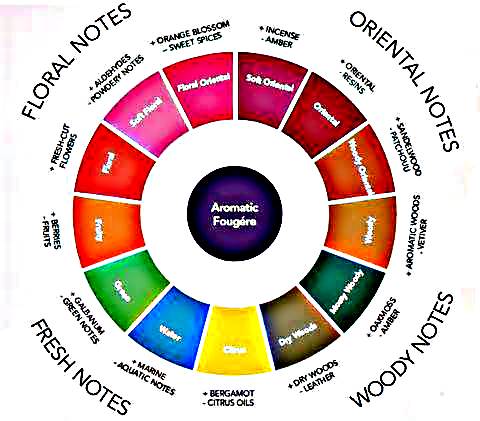
Many factors go into choosing a fragrance to suit you and your personal style
Just because a fragrance smells delicious on your sister does not mean it is the right choice for you. You probably already know that, finding out the hard and expensive way.
You scampered out and purchased such and such perfume after smelling it on your sister. You liberally spritzed it on and within an hour suffered the headache from Hades and, adding insult to injury, smelled like you’d been blasted with insect spray.
Choosing a fragrance to suit you involves many different things including how it smells on your skin, which is determined by various factors, as well as your personality, age, lifestyle, where you are going to wear and it and season.
Body Chemisty
A person’s body chemistry determines how a scent reacts on the skin. A variety of things can throw off a scent including medicine you are taking, your diet, the natural smell of your flesh, hormonal changes and stress.
The Composition
The ‘top note’ in a perfume is the initial fragrance you smell when you put on the scent. The top notes generally consists of lighter and more unstable aromas that evaporate promptly. The top note scent sticks around for five to 30 minutes.
The middle note, sometimes called the heart note, isn’t noticeable until 10 to 30 minutes after it’s been applied and after it has dried on the skin, mixing with your body chemistry. It creates the body of the blend. The middle or heart notes classify the fragrance such as oriental, floral, greens, tobacco/leather, chypre, aldehyes or Fougere.
~
Lastly, the ‘base notes’ are the scents that linger. These notes arise about a half hour after you have applied the scent. These notes have the largest molecular weight and last the longest. They are integral as fixtures, helping slow down the evaporation rates of the lighter notes, providing the scent holding power. Typical base notes include patchouli, musk, woods, oak moss and vanilla.
When a scent does not have a traditional top, middle and base note it is called ‘linear.’
Skin
Because skin is a concoction of many things, including water, fat, chemicals, salts, fatty acids, sugar, fibers, proteins and hair, every person’s skin unites the chemicals in the perfume distinctively and will release the release the smells differently. That is why perfume doesn’t smell the same on you as it does on your sister.
Keep in mind, the kind of scent you purchase. ‘Parfum’ or ‘perfume’ is typically the most intense form you can buy. It contains between 15 and 25 percent perfum oil dissolved in alcohol. Those mixtures with a lower quantity of oil to alcohol are called ‘eau,’ meaning water.
‘Parfum de toilette’ refers to a concentration that is either comparable to eau de parfum or somewhere between eau de parfum and parfum.
A good way to make your choice is by sampling scents at a department store. When sampling scents, do not try more than three at once because your nose will suffer from smell fatigue, becoming de-sensitized. Between whiffs of perfume, inhale the scent of coffee beans, if they’re available. This clears the nose of lingering smells.
Fragrance Wheel
The fragrance wheel, developed by Michael Edwards in 1983, is kind of like the color wheel. It provides a method of classifying perfume. The four standard families of fragrances include oriental, floral, wood and fresh.
Each family has thee subgroups. For example, the floral subgroups are floral, soft floral and floral oriental.These subcalsses are divided into ‘fresh,’ ‘crisp,’ ‘classical,’ and ‘rich’ compositions.
The Fougere family of fragrances was put in the center of the wheel prior to 2010 because it is a big family of scents containing elements from each of the four categories including oak moss and woods from the woody family; citrus from the fresh family; lavender from the floral family and incense and coumarin from the oriental family.
Try the scent map. This is a great way to break it down and determine what perfume is suited to you.
Ultimately, decide which family you are drawn to. Soem people love fresh smells while others love florals or orientals. Consider where you are going to wear it –to school? To work? An evening function? At home? Heavier scents are typically worn at night.
How much money do you want to spend? This will be a decisive factor unless you’re loaded. However, there are discounted perfumes online.

